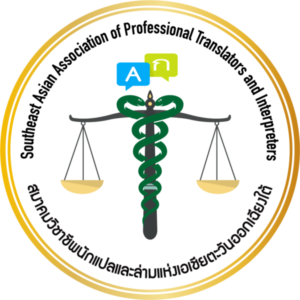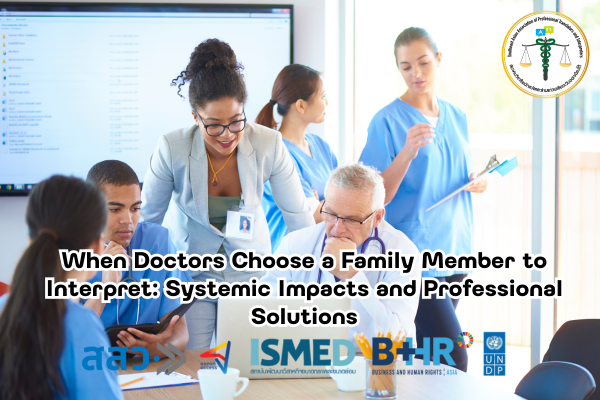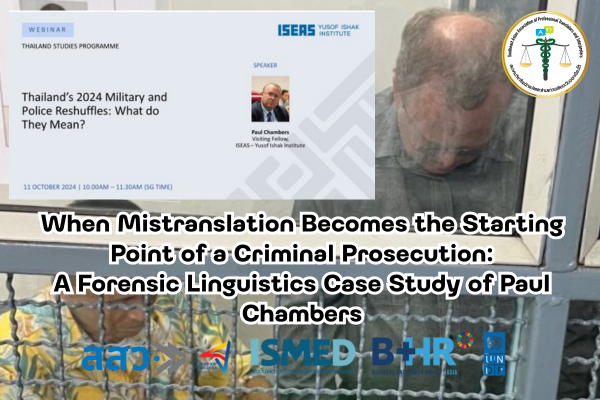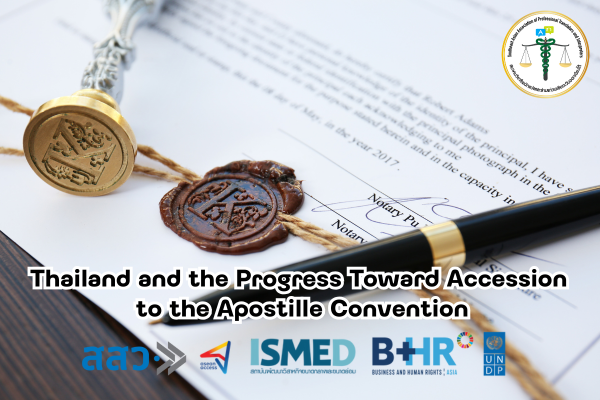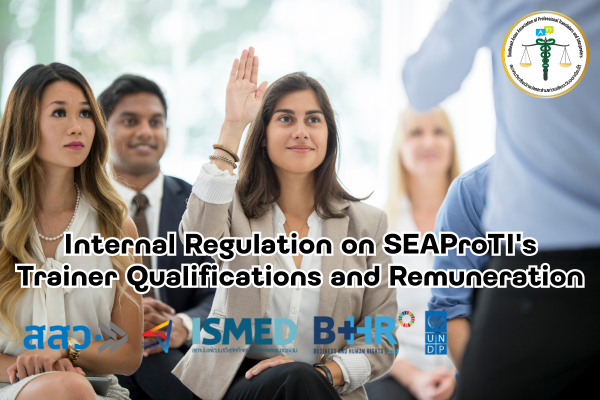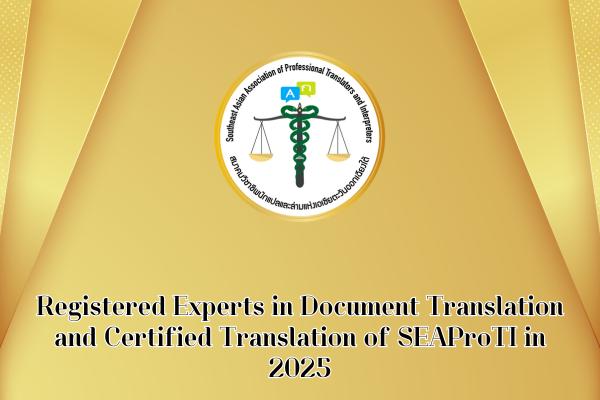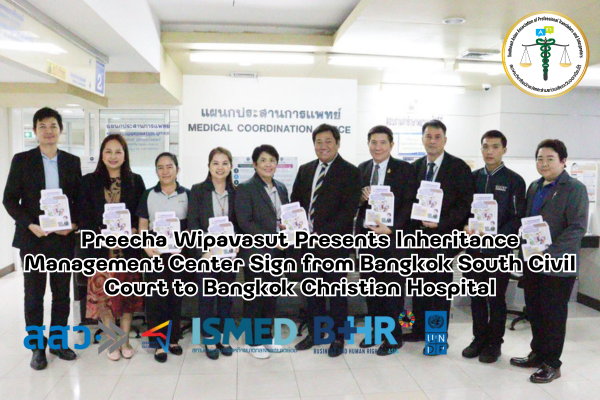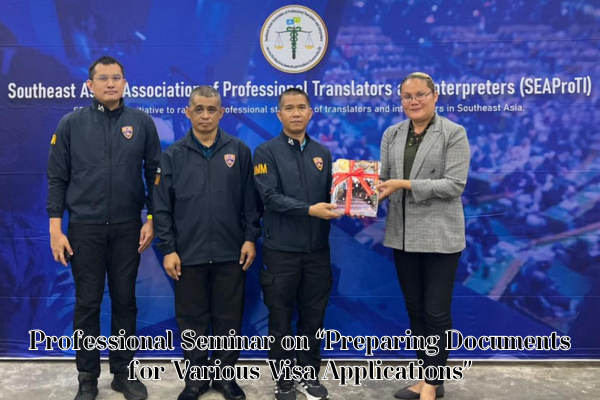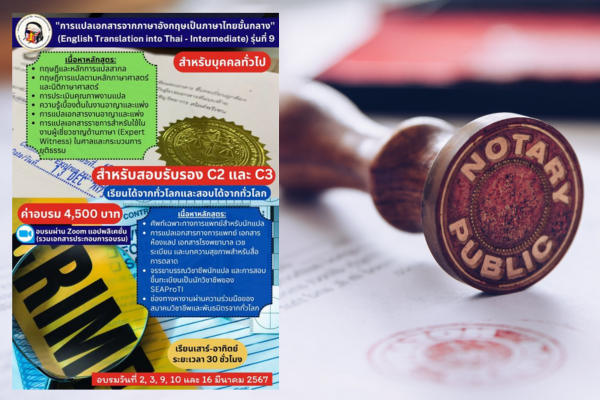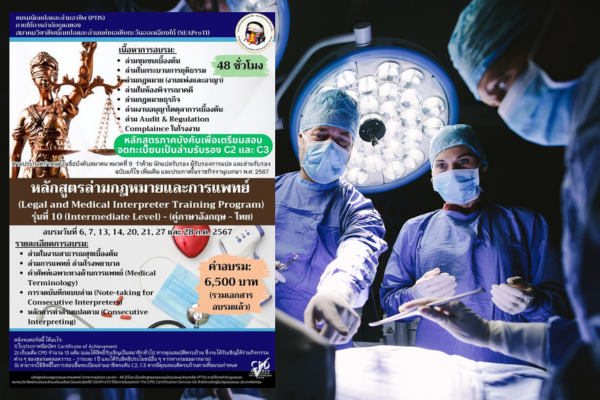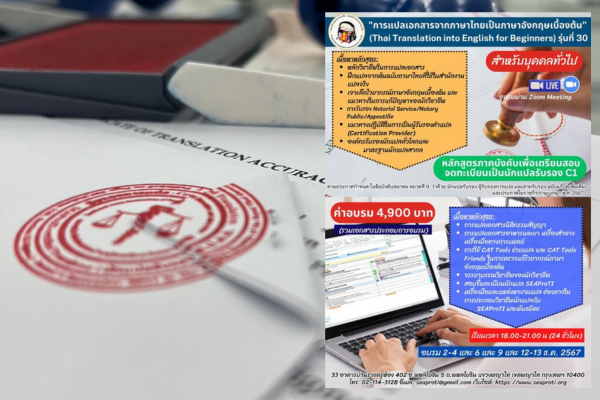When Doctors Choose a Family Member to Interpret: Systemic Impacts and Professional Solutions
25 April 2025, Bangkok – In increasingly multilingual and multicultural healthcare systems, effective communication between patients and medical professionals is a fundamental component of quality care. However, a common and deeply concerning issue persists: healthcare providers often choose a patient’s family member to interpret instead of engaging a professional interpreter. This practice has widespread implications—not only for patient safety and ethical standards but also for overall health outcomes.
This article explores the root causes of this problem, the risks it entails, and professional strategies to address it. It draws on current research to demonstrate the critical role professional interpreters play in clinical settings and offers concrete pathways to systemic change.
When Interpreters Are Dismissed: Field Reflections
While the presence of a loved one may provide emotional comfort for patients, asking that person to act as an interpreter can turn supportive relationships into burdensome responsibilities. More troublingly, this practice increases the risk of miscommunication and ethical violations.
Interpreters in many countries have reported being dismissed mid-session or having their calls disconnected when providers notice a family member is present. For instance, in a recent telephone interpreting encounter (OPI), the nurse was about to hang up upon realizing the patient’s daughter was in the room. It was the patient herself who stopped her: “If you’re already on the line, stay and help me.” The daughter later stepped out with a younger sibling, not because she had to interpret, but because she came to offer love and care as a family member.
The Risks of Not Using Professional Interpreters
Failing to engage qualified interpreters in clinical settings affects more than the patient experience—it directly impacts outcomes, safety, and even costs. Major risks include:
Medical Errors: As Espinoza & Derrington (2021) explain, language barriers contribute significantly to miscommunication, misinformation, and misdiagnosis. This increases the likelihood of complications, treatment failures, and harm to the patient.
Higher Healthcare Costs: Patients with Limited English Proficiency (LEP) tend to have longer hospital stays, higher readmission rates, and more frequent missed follow-ups. These outcomes put a greater financial burden on healthcare systems.
Violations of Patient Rights: Without language access, patients are deprived of informed consent, appropriate participation in care decisions, and equal treatment, raising both ethical and legal concerns.
The Value of Professional Interpreters: Evidence-Based Support
Research by Kwan et al. (2023) highlights that the presence of professional interpreters improves several key elements of hospital care: from accurate discharge instructions and proper consent procedures to greater adherence to medical plans.
At the training level, Nguyen et al. (2024) implemented a joint curriculum involving both medical students and interpreters. They found that 93.8% of participants incorporated these techniques into their real-world clinical practice, showing how cultural and linguistic competence can be effectively taught when collaboration is prioritized.
What Can We Do? Practical and Systemic Solutions
1. Raise Awareness
Interpreters should use language that ties their presence to patient safety and provider liability. One suggested phrase:
“Doctor, I’m here to help so that [the family member] can be a loved one, not bear the burden of interpreting complex medical care.”
2. Document the Dismissal
If interpreter services are declined, ask whether your organization has a system for recording interpreter refusals. If not, advocate for one. Logging such cases can help analyze patterns and develop targeted interventions.
3. Push for Policy Change
Lasting change requires support from hospital administration. Interpreter services must be framed as essential, not optional. Present data showing how professional interpretation shortens hospital stays, reduces costs, and improves clinical outcomes to gain leadership buy-in.
4. Integrate Interpreters into Medical Education
Medical, nursing, and allied health programs should integrate interpreter-related training into their curricula. Simulation exercises, case studies, and joint role-play activities with trained interpreters can help future providers understand the value of linguistically competent care.
Conclusion
The widespread practice of using family members as ad hoc interpreters reflects both individual misunderstandings and systemic flaws. Even if well-intentioned, this practice jeopardizes lives, violates patient rights, and undermines care quality. Interpreters are not just translators—they are facilitators of understanding. An accurate understanding is the foundation of safe and effective healthcare. To change this practice, we must act collectively. Interpreters, healthcare providers, administrators, and policymakers must work together to ensure that language access is treated not as a luxury but as a legal and clinical necessity.
References
-
Espinoza, J., & Derrington, S. (2021). How should clinicians respond to language barriers that exacerbate health inequity? AMA Journal of Ethics, 23(2), E109–E116.
https://journalofethics.ama-assn.org/article/how-should-clinicians-respond-language-barriers-exacerbate-health-inequity/2021-02 -
Kwan, M., Jeemi, Z., Norman, R., & Dantas, J. A. R. (2023). Professional interpreter services and the impact on hospital care outcomes. International Journal of Environmental Research and Public Health, 20(5165).
https://www.mdpi.com/1660-4601/20/6/5165 -
Nguyen, Q., Flora, J., Basaviah, P., Bryant, M., Hosamani, P., Westphal, J., Kugler, J., Hom, J., Chi, J., Parker, J., & DiGiammarino, A. (2024). Interpreter and limited-English proficiency patient training helps develop cross-cultural communication skills. BMC Medical Education, 24, 185.
https://bmcmededuc.biomedcentral.com/articles/10.1186/s12909-024-04901-z
SEAProTI’s certified translators, translation certification providers, and certified interpreters:
The Southeast Asian Association of Professional Translators and Interpreters (SEAProTI) has officially announced the criteria and qualifications for individuals to register as “Certified Translators,” “Translation Certification Providers,” and “Certified Interpreters” under the association’s regulations. These guidelines are detailed in Sections 9 and 10 of the Royal Thai Government Gazette, issued by the Secretariat of the Cabinet under the Office of the Prime Minister of the Kingdom of Thailand, dated July 25, 2024, Volume 141, Part 66 Ng, Page 100.
To read the full publication, visit: the Royal Thai Government Gazette
เมื่อแพทย์เลือกให้ญาติแปลแทน: ผลกระทบทางระบบ และทางออกเชิงวิชาชีพ
5 เมษายน 2568, กรุงเทพมหานคร – ในระบบสาธารณสุขที่มีความหลากหลายทางภาษาและวัฒนธรรมมากขึ้นทุกวัน ความสามารถในการสื่อสารอย่างมีประสิทธิภาพระหว่างผู้ป่วยและบุคลากรทางการแพทย์ถือเป็นรากฐานสำคัญของการดูแลรักษาที่มีคุณภาพ อย่างไรก็ตาม ปัญหาที่เกิดขึ้นบ่อยครั้งในระบบบริการสุขภาพทั่วโลกคือ การที่แพทย์หรือพยาบาลเลือกใช้ญาติของผู้ป่วยในการแปลแทนการใช้ล่ามวิชาชีพ ซึ่งมักมีผลกระทบต่อความปลอดภัยของผู้ป่วย การปฏิบัติตามจริยธรรมทางการแพทย์ และคุณภาพโดยรวมของบริการ
บทความนี้มุ่งวิเคราะห์ต้นตอของปัญหา ผลกระทบที่ตามมา และแนวทางที่ผู้ให้บริการด้านภาษา รวมถึงองค์กรด้านสาธารณสุข สามารถนำไปใช้ในการผลักดันให้เกิดความเปลี่ยนแปลงเชิงระบบ พร้อมทั้งยกหลักฐานทางวิชาการที่สนับสนุนบทบาทของล่ามวิชาชีพในบริบทการแพทย์
ปัญหาการใช้ญาติเป็นล่าม: ภาพสะท้อนจากภาคสนาม
แม้ว่าการมีญาติอยู่ใกล้ผู้ป่วยอาจช่วยให้เกิดความรู้สึกปลอดภัยและสบายใจ แต่เมื่อญาติถูกใช้เป็น “ล่าม” อย่างไม่เหมาะสม ความสัมพันธ์ทางครอบครัวอาจกลายเป็นภาระ ทั้งยังเพิ่มความเสี่ยงด้านจริยธรรมและข้อผิดพลาดทางการแพทย์
ประสบการณ์จากล่ามมืออาชีพหลายคนชี้ว่า พวกเขามักถูก “ปฏิเสธ” หรือ “ตัดสาย” เพียงเพราะบุคลากรเห็นว่ามีลูกหลานของผู้ป่วยอยู่ในห้อง เช่นเดียวกับกรณีศึกษาจากการแปลผ่านโทรศัพท์ (OPI) ที่ผู้เขียนเคยพบ พยาบาลเตรียมตัดสายทันทีที่เห็นว่าผู้ป่วยมีลูกสาวอยู่ด้วย จนกระทั่งผู้ป่วยกล่าวว่า “ไหน ๆ ก็อยู่แล้ว ช่วยฉันเถอะ” จึงได้ให้ล่ามทำงานต่อ ผลลัพธ์คือ ญาติคนนั้นได้กลับมาเป็น “ครอบครัว” แทนที่จะเป็น “ผู้แปล” อย่างไม่สมัครใจ
ความเสี่ยงที่มาพร้อมกับการไม่ใช้ล่ามวิชาชีพ
การไม่ใช้ล่ามวิชาชีพในบริบททางการแพทย์ไม่เพียงแต่กระทบต่อประสบการณ์ของผู้ป่วย แต่ยังสัมพันธ์กับผลลัพธ์ทางสุขภาพในระดับระบบอย่างมีนัยสำคัญ:
- ความคลาดเคลื่อนทางการแพทย์: งานวิจัยของ Espinoza & Derrington (2021) แสดงให้เห็นว่าการมีอุปสรรคด้านภาษาเพิ่มความเสี่ยงในการสื่อสารผิดพลาด การให้ข้อมูลที่ไม่ครบถ้วน และการวินิจฉัยผิดพลาด ซึ่งล้วนเป็นสาเหตุที่นำไปสู่ภาวะแทรกซ้อนและการรักษาที่ล้มเหลว
- ต้นทุนทางเศรษฐศาสตร์สุขภาพ: ผู้ป่วยที่มีความสามารถทางภาษาจำกัด (LEP: Limited English Proficiency) มีแนวโน้มที่จะมีระยะเวลานอนโรงพยาบาลยาวนานขึ้น เข้ารักษาซ้ำในระยะสั้น และมีอัตราการไม่กลับมาติดตามการรักษาสูงกว่ากลุ่มอื่น
- การละเมิดสิทธิผู้ป่วย: การไม่ใช้ล่ามทำให้ผู้ป่วยไม่สามารถใช้สิทธิเข้าถึงข้อมูลที่ถูกต้อง ซึ่งขัดต่อหลักสิทธิมนุษยชนและแนวทางปฏิบัติที่ดีทางการแพทย์
บทบาทของล่ามวิชาชีพ: หลักฐานเชิงประจักษ์
การวิจัยของ Kwan et al. (2023) พบว่า การใช้ล่ามวิชาชีพในโรงพยาบาลมีผลโดยตรงต่อคุณภาพของการดูแลผู้ป่วย โดยเฉพาะในกระบวนการให้ข้อมูลก่อนการจำหน่ายยา การให้ความยินยอมที่มีข้อมูลครบถ้วน (informed consent) และการติดตามการรักษาอย่างต่อเนื่อง
ในระดับการฝึกอบรม Nguyen et al. (2024) ได้ออกแบบโปรแกรมฝึกอบรมนักศึกษาแพทย์ร่วมกับล่าม และพบว่า 93.8% ของนักศึกษาได้นำแนวทางที่ได้เรียนรู้ไปใช้ในการดูแลผู้ป่วยจริง สะท้อนถึงความสำคัญของการฝึกการสื่อสารข้ามวัฒนธรรมในหลักสูตรแพทยศาสตร์และวิชาชีพสุขภาพ
ข้อเสนอเชิงระบบ: เราจะทำอะไรได้บ้าง?
1. สร้างความตระหนัก (Raise Awareness)
ผู้แปลควรใช้ภาษาที่เน้นความปลอดภัยของผู้ป่วยและความรับผิดชอบของบุคลากร เช่น
“ดิฉันมาเพื่อช่วยให้คนในครอบครัวได้ทำหน้าที่เป็นญาติ ไม่ใช่ต้องมารับภาระของการแปลทางการแพทย์ที่อาจมีผลต่อชีวิตผู้ป่วย”
2. จัดทำระบบบันทึกการปฏิเสธล่าม (Documentation & Accountability)
โรงพยาบาลควรมีระบบให้ล่ามหรือแผนกบริการภาษารายงานทุกกรณีที่ล่ามถูกปฏิเสธ เพื่อวิเคราะห์ความถี่ สาเหตุ และพัฒนาแนวทางการสื่อสารหรืออบรมเจ้าหน้าที่เพิ่มเติม
3. ผลักดันเชิงนโยบาย (Policy & Administration)
การเปลี่ยนแปลงที่ยั่งยืนต้องได้รับการสนับสนุนจากฝ่ายบริหาร เช่น การกำหนดนโยบายให้บริการล่ามเป็น “ข้อบังคับ” ไม่ใช่ “ทางเลือก” พร้อมแสดงข้อมูลเชิงเศรษฐศาสตร์ เช่น การลดจำนวนวันนอนโรงพยาบาล หรือค่าใช้จ่ายต่อผู้ป่วยหนึ่งรายเมื่อใช้ล่าม
4. บูรณาการในหลักสูตรการแพทย์ (Curriculum Integration)
โรงเรียนแพทย์ พยาบาล และเจ้าหน้าที่สาธารณสุขควรบูรณาการเนื้อหาเกี่ยวกับล่ามและการดูแลผู้ป่วยที่มีอุปสรรคด้านภาษาในหลักสูตรพื้นฐาน โดยร่วมมือกับล่ามวิชาชีพในการพัฒนาแบบฝึกหัดหรือกิจกรรมสมมุติสถานการณ์ (role-play)
บทสรุป
การเลือกใช้ญาติเป็นล่ามแทนล่ามวิชาชีพเป็นปัญหาที่สะท้อนทั้งความเข้าใจผิดในระดับบุคคลและช่องโหว่ในระดับระบบ แม้ว่าจะมีเจตนาดี แต่อาจนำมาซึ่งผลกระทบต่อชีวิตของผู้ป่วย และละเมิดสิทธิขั้นพื้นฐานในการเข้าถึงบริการที่ปลอดภัยและเท่าเทียม
ล่ามไม่ใช่เพียง “ผู้แปลคำ” แต่คือ “ผู้ประกันความเข้าใจ”
และความเข้าใจที่ถูกต้องคือรากฐานของการรักษาที่มีคุณภาพ
การเปลี่ยนแปลงต้องอาศัยความร่วมมือของทุกฝ่ายทั้งผู้แปล แพทย์ ผู้บริหารโรงพยาบาล และผู้กำหนดนโยบายสาธารณสุข เพื่อให้การเข้าถึงภาษากลายเป็นสิทธิพื้นฐาน ไม่ใช่สิ่งที่ต้องร้องขอ
เอกสารอ้างอิง
-
Espinoza, J., & Derrington, S. (2021). How should clinicians respond to language barriers that exacerbate health inequity? AMA Journal of Ethics, 23(2), E109–E116.
https://journalofethics.ama-assn.org/article/how-should-clinicians-respond-language-barriers-exacerbate-health-inequity/2021-02 -
Kwan, M., Jeemi, Z., Norman, R., & Dantas, J. A. R. (2023). Professional interpreter services and the impact on hospital care outcomes. International Journal of Environmental Research and Public Health, 20(5165).
https://www.mdpi.com/1660-4601/20/6/5165 -
Nguyen, Q., et al. (2024). Interpreter and limited-English proficiency patient training helps develop cross-cultural communication skills. BMC Medical Education, 24, 185.
https://bmcmededuc.biomedcentral.com/articles/10.1186/s12909-024-04901-z
เกี่ยวกับนักแปลรับรอง ผู้รับรองการแปล และล่ามรับรองของสมาคมวิชาชีพนักแปลและล่ามแห่งเอเชียตะวันออกเฉียงใต้
สมาคมวิชาชีพนักแปลและล่ามแห่งเอเชียตะวันออกเฉียงใต้ (SEAProTI) ได้ประกาศหลักเกณฑ์และคุณสมบัติผู้ที่ขึ้นทะเบียนเป็น “นักแปลรับรอง (Certified Translators) และผู้รับรองการแปล (Translation Certification Providers) และล่ามรับรอง (Certified Interpreters)” ของสมาคม หมวดที่ 9 และหมวดที่ 10 ในราชกิจจานุเบกษา ของสำนักเลขาธิการคณะรัฐมนตรี ในสำนักนายกรัฐมนตรี แห่งราชอาณาจักรไทย ลงวันที่ 25 ก.ค. 2567 เล่มที่ 141 ตอนที่ 66 ง หน้า 100 อ่านฉบับเต็มได้ที่: นักแปลรับรอง ผู้รับรองการแปล และล่ามรับรอง

